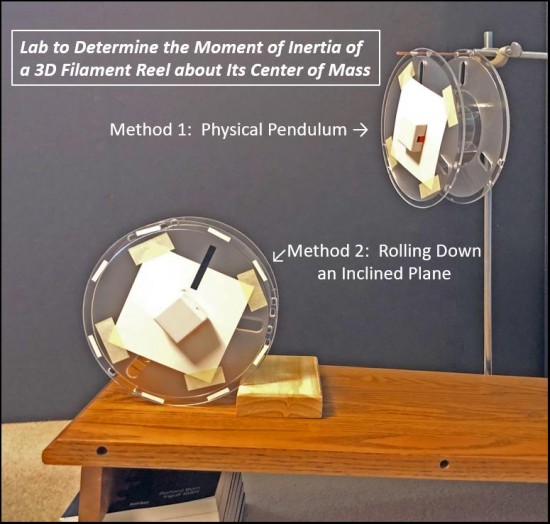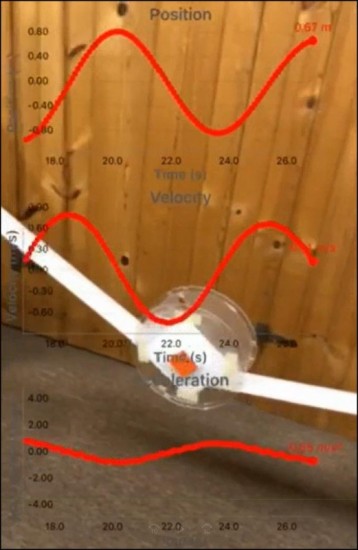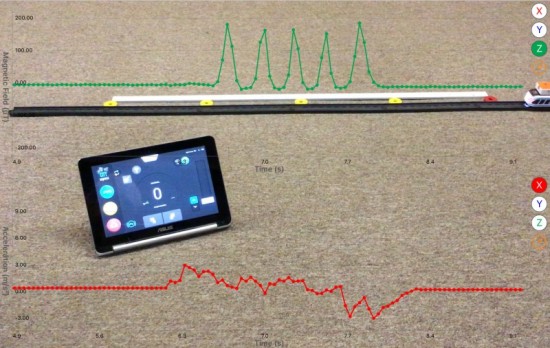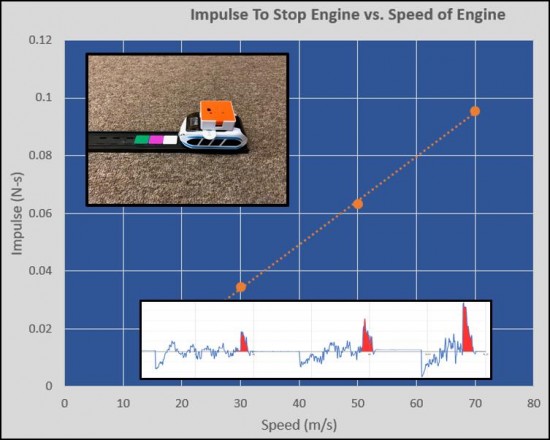Prepare your students for real-world problem solving and open-ended lab experiments. Experienced educators and curriculum specialists have developed each of these lessons, and we have tested them in real classrooms. PocketLab physics lessons cover introductory and advanced topics from one-dimensional motion to electricity and magnetism to simple harmonic motion. Browse all the high school and AP-level physics lessons below or use the filters to search for specific content.
High School Physics
Rolling Resistance Physics Lab
Rolling Resistance
Rolling resistance is a force that opposes the motion when an object rolls along a surface.There are many examples of objects experiencing rolling resistance: car or bicycle tires on pavement, skateboard wheels on a half pipe ramp, steel wheels on a railroad track, ball bearings in a pulley, bowling balls on a bowling lane, and carts rolling on a dynamics track, just to mention a few. Many factors can affect the magnitude of the forces associated with rolling resistance.
Moment of Inertia Challenge
The Moment of Inertia Challenge
Determinig the moment of inertia about the center of mass mathematically of an object with complex geometry is not an easy task. Consider, for example, the empty 3D filament reel shown in Figure 1, an empty 1-kg Polymaker Polylite™ PLA reel. With its holes and intricate axle design, the best way to determine the moment-of-inertia about its center of mass is via a laboratory experiment. Voyager (or PocketLab One) is mounted to the reel for data collection.
Kinematics of Translational and Rotational Motion
Introduction
Empty 3D filament reels are great devices to use in the physics classroom. There's a good chance that you and your students could come up with some interesting physics lab investigations using these reels. Attach Voyager or PocketLab One to the reel as shown in Figure 1, and the possibilities are endless! This lesson describes a lab in which your students study the kinematics of both translational and rotational motion when the reel rolls down a ramp on its axle. Students are often surprised when they see the reel speed up upon reaching the floor on which
Moment of Inertia of a 3D Filament Reel About Its CM
Introduction
Your school can put all of those empty 3D filament reels to good use in the physics classroom. There's a good chance that you and your students could come up with some interesting physics lab investigations using these reels. As shown in Figure 1, attach Voyager or PocketLab One to the reel, and the possibilities are endless! This lesson describes a lab in which your students determine the moment of inertia of an empty 3D filament reel about its center-of-mass. They will accomplish this using two independent methods. One method has the reel acting as a p
Unrolling Spool Problem Quantitative Experiment
Introduction
Think twice before discarding your school's empty 3D filament reels. There's a good chance that you and your students could come up with some interesting physics lab investigations using these reels. As shown in Figure 1, attach Voyager or PocketLab One to the reel, and the possibilities are endless! This lesson describes a quantititive experiment that your students can perform in a study of the classic "unrolling spool problem".
Periodic Motion of an Empty 3D Filament Reel
Introduction
Don't discard your school's empty 3D filament reels. There's a good chance that you and your students could come up with some interesting physics lab investigations using these reels. Attach Voyager or PocketLab One to the reel and the possibilities are endless! This lesson describes a unique experiment in which periodic motion is investigated using an empty 3D filament reel. Depending on the teacher's goals and amount of detail in the analysis of collected data, this lab could be used from the 4th grade through high school. The
NGSS Seismic Basketball Challenge
The NGSS Seismic Basketball Challenge
This NGSS seismic basketball challenge fits well in the study of motion for high school physics students. Here is a statement describing the challenge:
Place PocketLab Voyager on a wood floor with accelerometer data being captured. Drop a basketball onto the floor near Voyager and let it bounce several times, being careful to not let it hit Voyager. From the recorded accelerometer data, determine the original height from which the basketball was released.
Intelino / Voyager Lab: "Floor-it" Acceleration/Max Speed
Introduction
The purpose of this lesson is to challenge your students to design an experiment for which data from PocketLab Voyager is used to determine the "floor-it" acceleration and maximum speed of the intelino smart train engine. Required data should be obtained in a single run of data collection by the PocketLab app. Figure 1 shows a picture of Voyager attached to the top of an intelino smart engine. Designed for all ages, intelino is intuitive with its app, has built-in sensors to provide an interactive experience for the user, and is easily programmed with colo
intelino / Voyager Lab: Stopping Distance vs. Speed
Introduction
Have you ever been told not to follow too close to the driver ahead of you? To keep a safe distance? To abide by the "3-second rule"? To keep a distance of at least one car length for every ten miles per hour of speed? These questions all deal with the issue of stopping distance versus speed in order to avoid crashes. A great way to investigate the relationship between stopping distance and speed is to interface Voyager with an "intelino® smart train". Designed for all ages, intelino is intuitive with its app, has bui
intelino / PocketLab: Velocity vs. Impulse to Stop
Introduction
While driving at 40 mph, you see a red stop light ahead. You press your brakes for several seconds, gradually coming to a stop. A little later on the same road at 40 mph, you approach another light, this time green. While approaching this light, it suddenly changes to yellow. You make a split-second decision to put on your brakes to avoid going through a red light. With the brakes applied quite hard, you quickly stop, waking up your sleeping friend in the front passenger seat.










